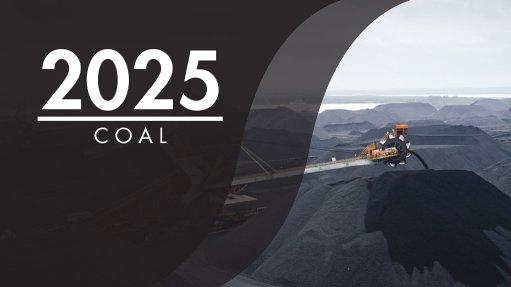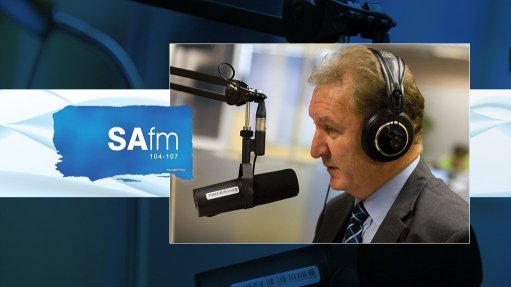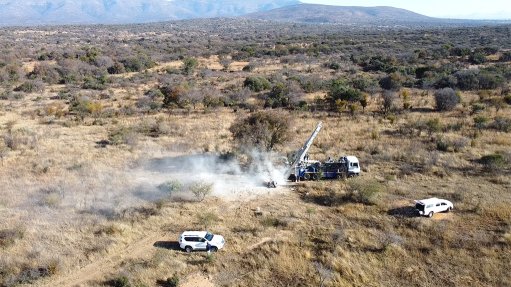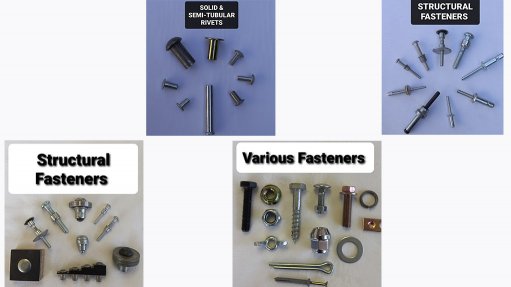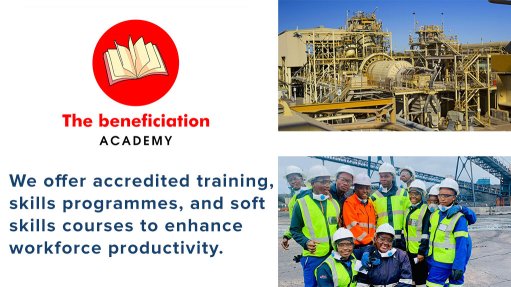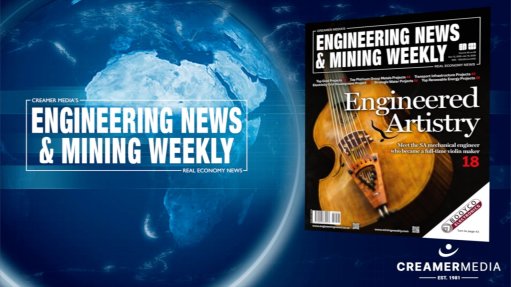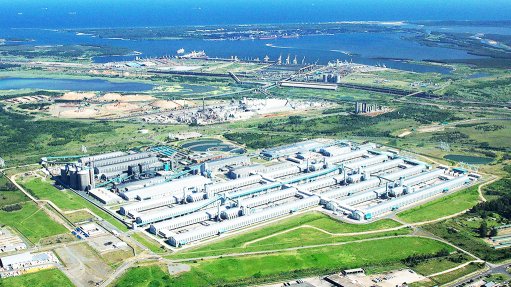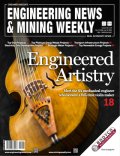Ecological solutions enable adaptable, long-term value

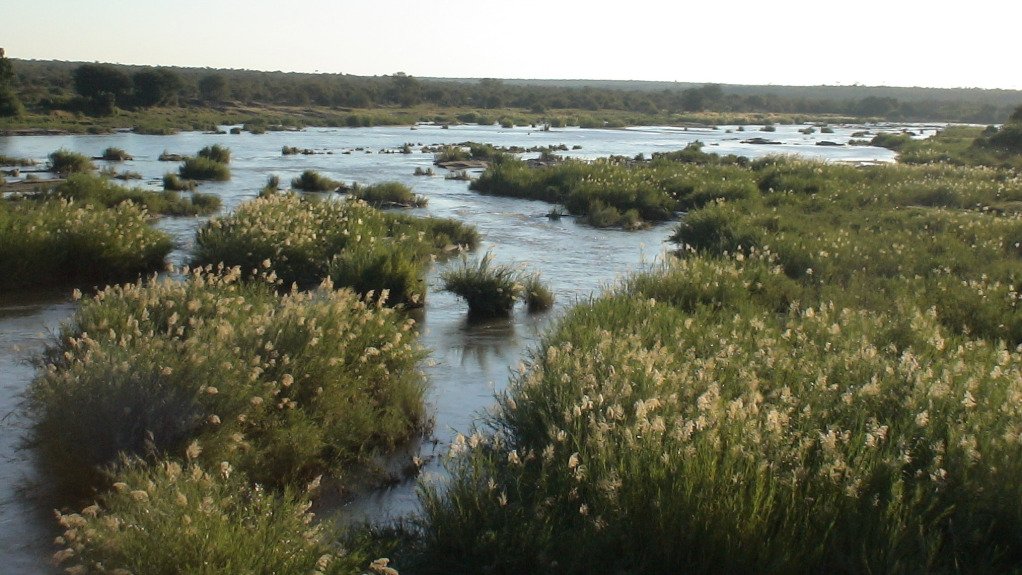
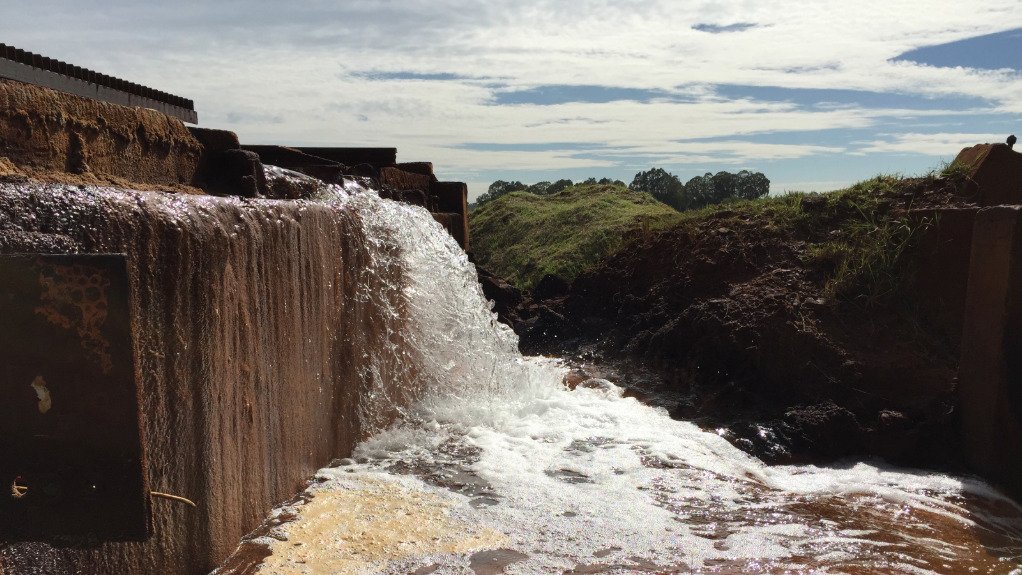
NATURE-BASED SOLUTIONS Passive wetland and algal systems can provide a low-maintenance, regenerative water treatment solution
BEST OF BOTH A hybrid approach uses passive systems for bulk contaminant removal and reserves active treatment for final polishing, leveraging the advantages of both
Ecologically engineered wetlands and algae-based systems can play a significant role in managing acid mine drainage and sulphate-rich waters at active and legacy mining sites, while enabling long-term cost-effectiveness and supporting sustainability, reports University of Free State ecological engineering senior lecturer Dr Yolandi Schoeman.
These nature-based systems can form a multi-barrier treatment train that sequentially neutralises acidity, removes dissolved metals and reduces sulphate concentrations, resulting in compliant water discharge and the establishment of resilient, self-sustaining ecosystems, she notes.
The treatment process typically starts with aerobic surface-flow wetlands, where dissolved metals, such as iron and aluminium, oxidise into insoluble hydroxides. These particles settle out in gently sloping, oxygen-rich basins, significantly lowering metal concentrations.
Following this, Schoeman says, the water percolates into anaerobic subsurface beds, often filled with gravel or biochar seeded with sulphate-reducing bacteria. These bacteria convert sulphates into sulphides, which binds the remaining metals into stable precipitates, effectively immobilising them within the substrate.
Emergent wetland vegetation, including species such as Typha and Phragmites, then absorbs residual nutrients and trace metals, while their root networks reintroduce oxygen into sediments, supporting aerobic microbial communities.
The final stage of these natural solutions involves algal polishing systems, where microalgae such as Chlorella assimilate trace contaminants, remove CO2 through photosynthesis and gently increase pH.
These low-energy, sunlight-driven systems provide consistent, final-stage refinement to meet strict discharge requirements, she says.
“In active mining operations, these engineered wetlands and algal modules can be seamlessly integrated into the water management circuit, treating continuous flows from processing plants or pit dewatering,” explains Schoeman.
At legacy mine sites, she says passive wetland and algal systems can provide a low-maintenance, regenerative solution that adapts to intermittent flows.
Beyond water treatment, these nature-based solutions offer additional ecosystem services, including flood attenuation, groundwater recharge, carbon sequestration and enhanced biodiversity.
Considerations
Passive treatment systems, such as constructed wetlands and organic-media bioreactors, differ significantly from high-tech active systems, such as reverse osmosis and nanofiltration, in lifecycle costs and operational demands, says Schoeman.
For passive systems, she notes that most of the costs are upfront, covering earthworks, substrate materials, civil works and planting.
However, once established, Schoeman says they require low energy, no costly chemical inputs and only periodic maintenance, such as sediment removal or biomass harvesting.
These systems can function effectively for 15 to 20 years without major intervention, making them highly cost-effective, she adds.
In contrast, active systems involve ongoing high costs in addition to initial structure costs, including energy consumption, membrane replacements, chemical cleaning and the need for skilled technicians to resolve any function issues, advises Schoeman.
These systems are also vulnerable to loadshedding, equipment theft and unplanned downtime.
As a result, a mining operation could benefit from a hybrid approach, which uses passive systems for bulk contaminant removal and reserves active treatment for final polishing.
This strategy reduces total cost of ownership, reduces reliance on constant energy supply and is better suited to the realities of remote or resource-constrained sites, she states.
Hybrid passive–active remediation systems are designed to manage fluctuating water volumes and contaminant loads while reducing long-term costs.
Hybrid systems also ensure reliable treatment, with active processes providing consistent water quality for downstream passive units.
The active front-end treatment typically involves lime dosing or membrane technologies such as reverse osmosis or nanofiltration to rapidly neutralise acidity and remove the bulk of dissolved metals.
Once the primary pollutants are addressed, Schoeman says the water is passed through a sequence of passive back-end cells, which typically include horizontal- and vertical-flow constructed wetlands, organic-media bioreactors and algal polishing systems.
In addition to meeting discharge standards, hybrid systems offer co-benefits such as flood mitigation, groundwater recharge and biodiversity support, she says, adding that, ultimately, these systems allow mining operations to adapt water treatment solutions to evolving site-specific needs while fostering lasting environmental value.
Hindering Factors
Despite the proven environmental and operational benefits of ecological and hybrid water treatment technologies, several barriers continue to hinder their wider adoption in the mining sector, notes Schoeman.
On the research front, she says there is a lack of regionally calibrated design guidance with many existing systems being based on international standards that do not account for South Africa’s unique soils, microbial processes, evaporation rates, metal loads and climate extremes, leading to underperformance in early projects.
Implementation challenges can stem from capacity and risk perceptions, with mine engineers and consultants often being more familiar with mechanical technologies than with ecologically engineered wetlands or landscape restoration, notes Schoeman.
Further, while tools such as the Ecological Engineering Nexus Accounting Framework can quantify ecosystem services, they are not yet widely adopted in financial planning or environmental, social and governance reporting, she notes.
“Without mechanisms to monetise benefits such as carbon credits, biodiversity offsets, or water-use efficiencies, it is difficult for project sponsors to justify the initial investment, despite the long-term cost savings.”
To overcome these gaps, Schoeman says the South African mining industry requires localised research, South Africa-specific design manuals, training programmes and regulatory reforms that align water management with biodiversity and sustainability goals.
Article Enquiry
Email Article
Save Article
Feedback
To advertise email advertising@creamermedia.co.za or click here
Press Office
Announcements
What's On
Subscribe to improve your user experience...
Option 1 (equivalent of R125 a month):
Receive a weekly copy of Creamer Media's Engineering News & Mining Weekly magazine
(print copy for those in South Africa and e-magazine for those outside of South Africa)
Receive daily email newsletters
Access to full search results
Access archive of magazine back copies
Access to Projects in Progress
Access to ONE Research Report of your choice in PDF format
Option 2 (equivalent of R375 a month):
All benefits from Option 1
PLUS
Access to Creamer Media's Research Channel Africa for ALL Research Reports, in PDF format, on various industrial and mining sectors
including Electricity; Water; Energy Transition; Hydrogen; Roads, Rail and Ports; Coal; Gold; Platinum; Battery Metals; etc.
Already a subscriber?
Forgotten your password?
Receive weekly copy of Creamer Media's Engineering News & Mining Weekly magazine (print copy for those in South Africa and e-magazine for those outside of South Africa)
➕
Recieve daily email newsletters
➕
Access to full search results
➕
Access archive of magazine back copies
➕
Access to Projects in Progress
➕
Access to ONE Research Report of your choice in PDF format
RESEARCH CHANNEL AFRICA
R4500 (equivalent of R375 a month)
SUBSCRIBEAll benefits from Option 1
➕
Access to Creamer Media's Research Channel Africa for ALL Research Reports on various industrial and mining sectors, in PDF format, including on:
Electricity
➕
Water
➕
Energy Transition
➕
Hydrogen
➕
Roads, Rail and Ports
➕
Coal
➕
Gold
➕
Platinum
➕
Battery Metals
➕
etc.
Receive all benefits from Option 1 or Option 2 delivered to numerous people at your company
➕
Multiple User names and Passwords for simultaneous log-ins
➕
Intranet integration access to all in your organisation






